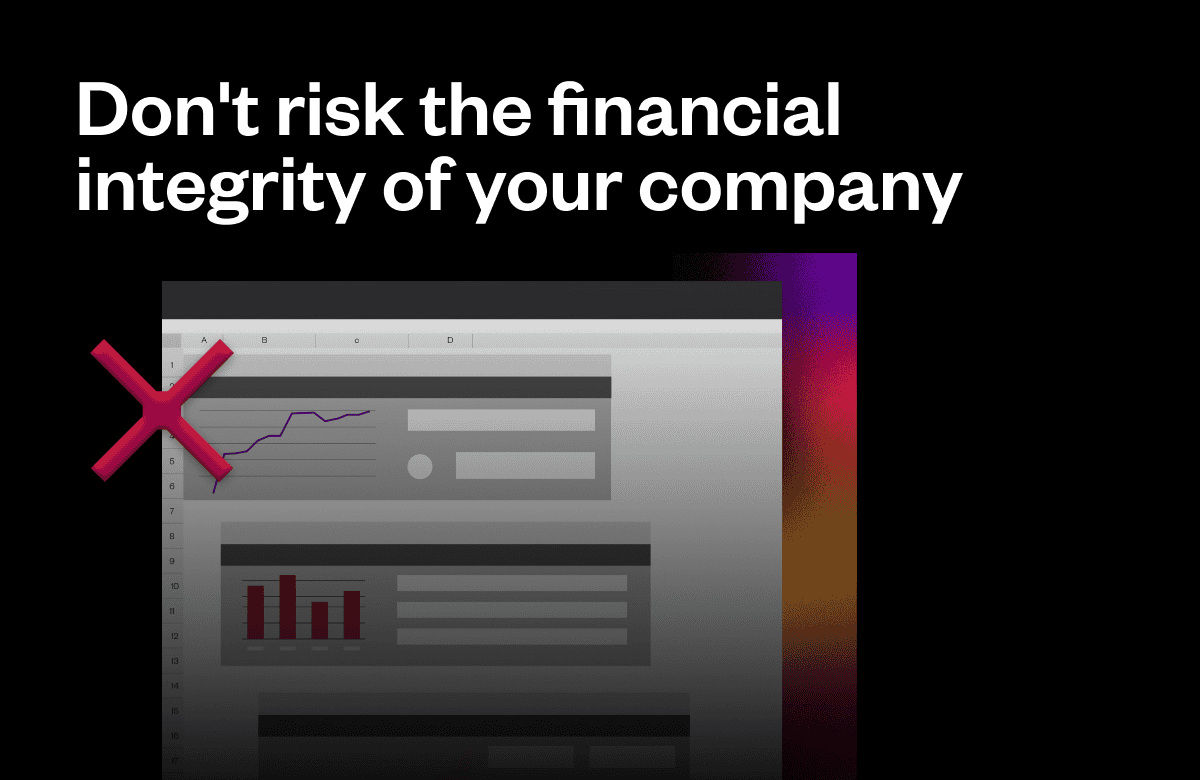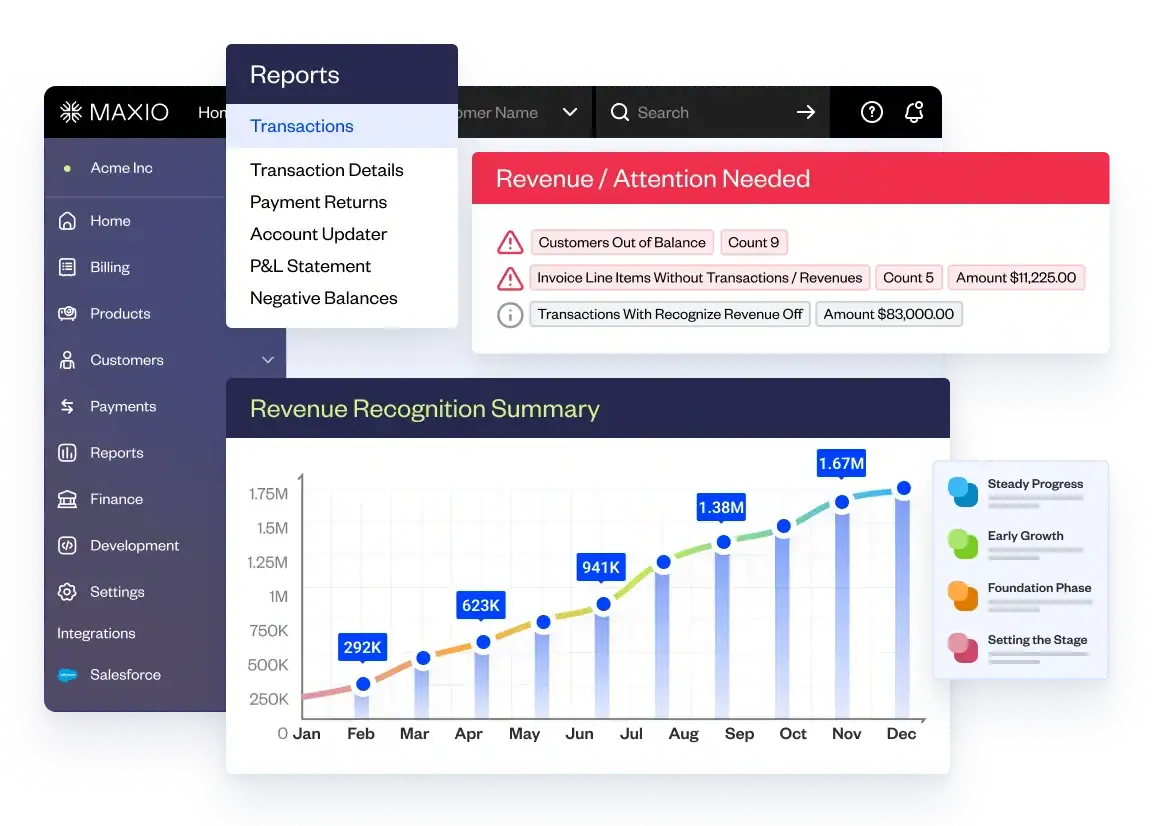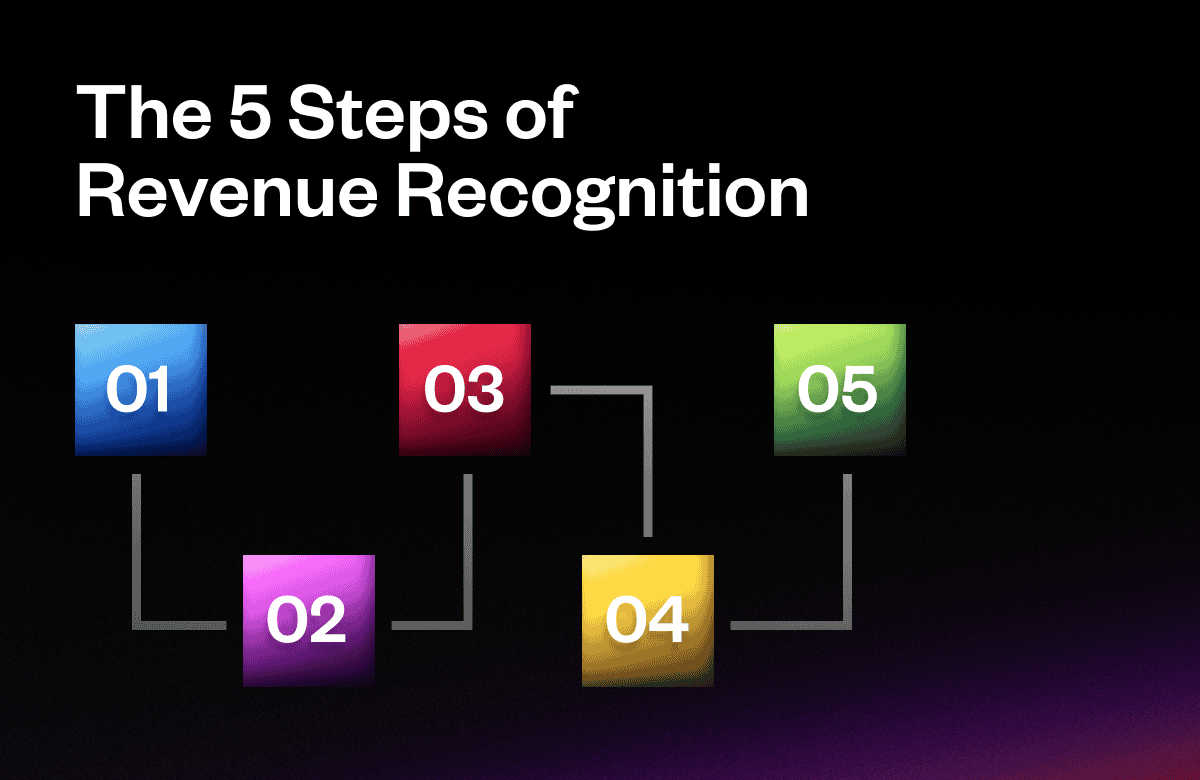Revenue recognition is a make-or-break process for SaaS companies.
Flawed revenue recognition distorts financial reporting, metrics, valuations, and investor perceptions. Yet despite these risks, the SaaS CFO’s 2024 Finance and Ops Survey alarmingly found that 39% of SaaS companies still use spreadsheets for revenue recognition.
With so much at stake, SaaS companies must ensure their monthly recurring revenue schedules and methodologies are bulletproof. Here’s how to avoid falling victim to an overreliance on spreadsheets for rev rec and what to do about it.
The Risks of Using Spreadsheets for Revenue Recognition
Every finance and accounting professional worth their salt knows their way around a spreadsheet. They can be used to build forecasting models, cap tables, P&Ls–virtually everything you’d ever need to manage a business’s cash flow.
But what happens when a business introduces recurring revenue, hybrid-pricing models, and accrual-based accounting methods? If you have plans to scale your SaaS business in hopes of an eventual exit or IPO, but you’re still using spreadsheets to account for these financial complexities, you might as well flip a coin to determine whether or not your business stays afloat. Dramatics aside, relying on spreadsheets to manage a $1M ARR SaaS business can quickly lead to non-compliance, a loss of funding, and a lower exit valuation if you’re not careful.
Here are a few of the other risks that come with using spreadsheets at scale.
Lack of Robustness and Detail
Spreadsheets lack the flexibility and rigorous logic to accurately account for complex recurring revenue, hybrid pricing models, complex sales-negotiated contracts, and revenue share models. All of these factors make it incredibly difficult to manually track a SaaS company’s monthly cash flow.
Even if you’re able to keep your company’s financials under control in the early stages of your business, your problems will only start to snowball as auditors and investors ask for historical records of your financial statements later on (and they better be accurate if you want to stay funded).
Prone to Manual Human Error
The manual nature of spreadsheets leaves them vulnerable to accidental human data entry and formula errors that can quickly spiral out of control. A minor mistake can easily distort your records of MRR, deferred balances, revenue recognition timing, and other critical financial reports.
What’s worse is that many companies typically only have one or two employees who understand what is inside these large spreadsheets and how to operate them. Leaving the institutional knowledge of your company’s financials in the hands of one or two people could have major repercussions later on. Instead, your best bet is to invest in a point solution that is purpose-built to manage revenue recognition for complex subscription-based businesses.
Difficulty with Auditability & Documentation
Many auditors will refuse to rely on spreadsheet-based revenue recognition processes given the lack of detail, transparency, controls, and documentation inherent to them. Spreadsheets make it painfully difficult to track sources, assumptions, interdependent calculations, and changes over time. Auditors require end-to-end clarity into revenue recognition logic with guard rails against inadvertent errors.
Additionally, spreadsheets nurture disorder without rigorous change controls. Imagine an auditor combing through a tangled, complex spreadsheet months or years after its initial creation and trying to retrace steps. With poor version histories, cell-level details, untraceable precedents, and limited notes, unraveling another person’s spreadsheet logic is virtually impossible.
Ineffective Reporting and Analytics
Spreadsheets often sync poorly with other systems and provide limited canned or dynamic reporting on revenue recognition activities, schedules, and trends. Copying and pasting data between spreadsheets and connected systems like billing, ERPs, and data warehouses also opens the door to errors through manual data manipulation. Even when spreadsheets are technically integrated, they rarely trigger automatic, real-time data exchanges.
Additionally, the rigid structure of spreadsheets makes dynamic reporting around revenue highly manual. For example, easily pivoting a revenue report to show new views– like revenue by product line, contract type, global region, or customer tier– typically requires tedious spreadsheet surgery. And most calculation-heavy spreadsheets choke when more than 2-3 basic reporting filters are applied.
To maintain visibility, financial planning requires slicing and dicing revenue recognition from many perspectives. However, trying to infuse granular reporting across key dimensions will quickly overwhelm most spreadsheets.
Rather than roll the dice, SaaS finance teams should consider implementing purpose-built revenue recognition software that’s capable of managing monthly recurring revenue schedules, automating revenue recognition, ensuring compliance, and providing air-tight audit trails. The bottom line– your revenue recognition must be bulletproof.
Spreadsheets Are Not Built to Handle Complex Rev Rec Scenarios
In addition to human errors and poor reporting, spreadsheets can’t handle many of the revenue recognition complexities that commonly show up in modern SaaS businesses. From usage-based pricing models to sales-negotiated contracts, spreadsheets lack the dynamic modeling capabilities required for absolute accuracy.
Here are two examples of high-risk edge cases that spreadsheets fail to properly handle.
Scenario 1: Usage-Based Pricing Models
Many SaaS companies offer usage-based pricing models alongside or instead of subscription fees.
For example, customers may be charged per API call, compute hours consumed, data processed, seats accessed per month, etc. Tracking and properly recognizing revenue across these different usage-pricing variables requires complex logic that no spreadsheet can efficiently handle.
Scenario 2: Non-Standard Customer Contracts
SaaS companies often negotiate custom contracts with large enterprise customers that involve discounted future rates, prepaid amounts, tiered pricing rates as usage scales, revenue share components, and more. Attempting to model these multi-year non-standard arrangements manually becomes an unmanageable mess in basic spreadsheets.
In short, the variability of modern SaaS pricing and deal structures leads to intricacies that spreadsheets just weren’t designed for.
Regulatory changes that spreadsheets struggle with
If trying to force-fit a spreadsheet into a rev rec solution wasn’t difficult enough, SaaS finance leaders also have to take updated accounting standards and increased regulatory scrutiny into account. Non-compliance just isn’t an option if you want to successfully scale a business, and spreadsheets don’t offer that compliance safety net.
For example, the Financial Accounting Standards Board (FASB) is currently reviewing accounting standards for vendor-specific objective evidence (VSOE) and implied PCS in cloud computing contracts. Defining and separating revenue components from bundled SaaS/PCS contracts under new guidelines involves intricacies that would be manually intensive–if not impossible–in basic spreadsheets.
Additionally, global regulators are pressing for more disclosures and financial details tied to revenue recognition methodologies. Capturing, documenting, and reporting on elements like performance obligations, contract assets/liabilities, and disaggregated revenue data introduces a significant compliance burden that spreadsheets are too limited to manage.
Why Revenue Recognition Software is Necessary for SaaS Companies
You don’t need to invest in an ERP right off the bat if you’re facing difficulties using spreadsheets for rev rec. So what’s the third option?
Well, according to the 2024 Finance and Ops Survey, most of the 535 SaaS participants currently prefer stitching together targeted point solutions instead of using an all-in-one ERP, especially in the early stages. More specifically, 57% stated they prefer point solutions and are comfortable with multiple solutions integrated together, while only 24% preferred to limit the number of solutions through an ERP system.
This is why we recommend that SaaS companies should implement a point solution that is purpose-built to automate and manage their complex revenue recognition scenarios. Here are just a few of the key features that revenue recognition software provides:
Automated MRR Schedule Management: Systematically automate the tracking, management, and revenue recognition tied to monthly recurring revenue subscription schedules.
Sophisticated Revenue Modeling: Handle even intricate deferred revenue, prepaid contracts, revenue shares, milestones, and custom revenue recognition rules with flexibility that no spreadsheet can match.
Compliance and Standards: Maintain compliance with accounting standards like ASC 606 and IFRS 15 automatically.
Reporting and Analytics: Offer pre-configured and ad hoc reporting on revenue recognition activities, trends, and drivers across specific product lines, customer cohorts, subscriptions, and other dimensions.
This level of automation, flexibility, and insight is impossible in makeshift spreadsheets. On the other hand, purpose-built rev rec software also provides the scalability, controls, and auditability that are crucial for sustainable business growth.
Streamline Your Rev Rec Process with Maxio
In summary, relying on decentralized spreadsheets for core revenue recognition is reckless at best. At its worst, it could lead to a loss of funding, a failed audit, or negatively impact your valuation upon exit. Rather than ignoring these risks, SaaS finance leaders must implement integrated revenue recognition systems to ensure financial integrity across their businesses.
Want to maintain financial integrity and achieve sustainable growth? Schedule a demo to learn how Maxio is helping countless SaaS companies retire their spreadsheets for good so they can focus on scaling.
Get a demo
Explore the #1 billing and finance platform for B2B SaaS.






